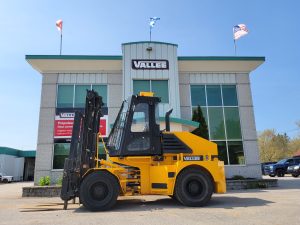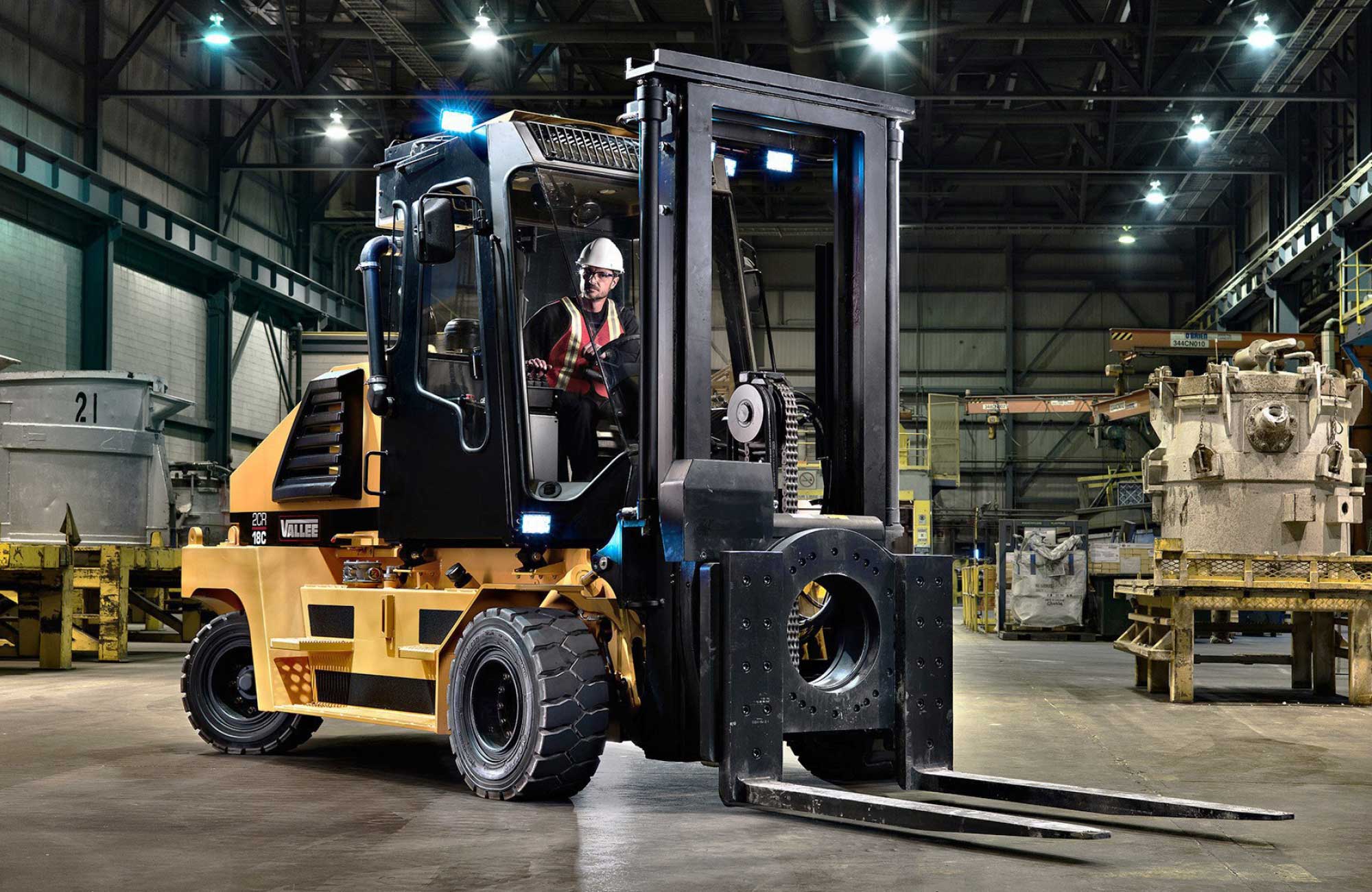In today’s industrial world, high-capacity forklifts are crucial in handling and transporting heavy loads in various construction, manufacturing, and logistics sectors. These powerful equipment, capable of lifting tens of thousands of pounds, are indispensable for productivity and operational efficiency. However, with this power comes great responsibility. One of the most important questions for businesses and operators is whether specific licensing is required to maneuver these heavy vehicles. This article explores the certification and training requirements for operators of high-capacity forklifts, highlighting why these requirements are not only a matter of regulatory compliance but also a crucial element in ensuring workplace safety.

Why Certification is Crucial:
Certification for forklift operators is crucial, and it varies significantly depending on where the work is being carried out. In the United States, OSHA (Occupational Safety and Health Administration) sets strict standards for forklift operator training. In Canada, requirements are governed by provincial bodies, such as the Ministry of Labour in Ontario or CNESST in Quebec. The European Union’s directives and member states’ national regulations establish training criteria in Europe. These regional and national standards ensure that high-capacity forklift operators are trained to safely operate these machines, understand equipment limits, and understand lifting and maneuvering techniques and safety procedures. Adequate training is essential for regulatory compliance and accident prevention, reducing downtime and minimizing costs related to property damage.
Moreover, most employers require this certification and are often willing to assist their employees in obtaining it, underscoring its importance for a safe and efficient work environment. Thus, certification is a fundamental pillar for maintaining a safe and efficient work environment, with requirements varying significantly between regiones.
How to Get Certified in Canada:
Depending on the province where your offices are located, it is necessary to consider the differences and regulations of each province. Let’s see the process in Quebec and Ontario together.
Quebec Province (CNESST):
- Assessment of Training Needs: Determine if the new employee already has a valid certification for high-capacity forklifts. If yes, ensure that their training is up to date.Choice of Training Program: Select a recognized training program specific to high-capacity forklifts. Here are some examples of training organizations in Quebec:
- Training T.D.G Inc.
- Website: Training T.D.G Inc.
- Forklift Training South Shore
- Website: Forklift Training South Shore
- Charlevoix Training
- Website: Charlevoix Training
- Vallee Training
- Please fill out the form to know more about this service or contact us by phone.
- Training T.D.G Inc.
- Theoretical and Practical Training: The training organization usually provides Theoretical and practical training. It includes safety, operations, and specific regulations for heavy forklifts.
- Evaluation and Certification: The training organization assesses operators’ skills and issues temporary certificates. CNESST, as the regulatory body, verifies the compliance of the certification issued by the training organization with current safety standards.
- Final Certification: If CNESST confirms that the training organization has met training and evaluation standards, the operator receives the final certification from CNESST.
Renewal and Continuing Education: Plan renewal sessions according to provincial requirements. Offer continuing education to maintain skills and safety awareness.
Ontario Province (Ontario Ministry of Labour):
- Assessment of Training Needs: Determine if the new employee already has a valid certification for high-capacity forklifts. If yes, ensure that their training is up to date.
- Theoretical and Practical Training: Theoretical and practical training is generally provided internally by the employer following the Ontario Ministry of Labour requirements. Here are some examples of health and safety training organizations in Ontario:
- Evaluation and Certification: Internal trainers or the employer assess operators’ skills and, if successful, issue certificates following provincial standards. In Ontario, the employer is often responsible for certification.
- Renewal and Continuing Education: Plan renewal sessions according to provincial requirements. Offer continuing education to maintain skills and safety awareness.
By following these steps and considering specific provincial regulations, you ensure that your employee is qualified to operate high-capacity forklifts safely and in compliance with Quebec or Ontario provincial regulations. Comply with your province’s specific rules and obtain the appropriate certification for your operators.
Overall, each province has its own training and workplace safety standards, and employers and operators need to comply with their region’s specific requirements to ensure safe forklift operations. Proper certification and training are essential to ensuring worker safety and compliance with provincial regulations.
How to Get Certified in the USA:
Suppose you are an employer in the United States looking to train a new employee in operating high-capacity forklifts.
Here’s how to ensure training meets OSHA standards:
- Assessment of Training Needs: Determine if the new employee already has a valid certification for high-capacity forklifts. If yes, ensure that their training is up to date.
- Choice of Training Program: Select a recognized training program specific to high-capacity forklifts. Here are some well-known third-party training organizations:
- National Safety Council (NSC)
- National Safety Compliance (NSC)
- Forklift University
- Total Equipment Training
- Registration and Theoretical Training: Enroll the employee in the chosen program. Theoretical training can be conducted online or in a classroom, covering safety, operations, and specific regulations for heavy forklifts.
- Practical Training: Ensure the employee completes practical training, which is often conducted on-site with actual forklifts, under the supervision of qualified trainers.
- Certification and Evaluation: After training, the employee must undergo a practical evaluation with the chosen training organization to obtain certification, which must be renewed periodically.
- Renewal and Continuing Education: Plan renewal sessions and offer continuing education to maintain skills and safety awareness.
By following these steps and selecting a recognized third-party training organization, you ensure that your employee is qualified to operate high-capacity forklifts safely and under OSHA regulations.




